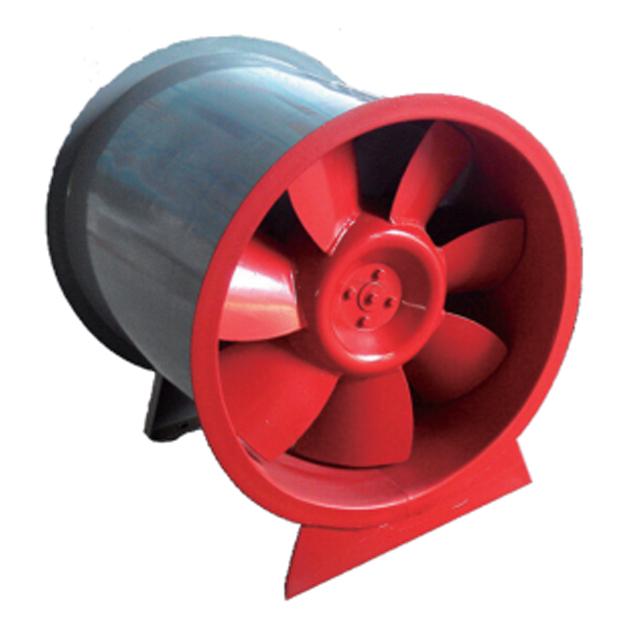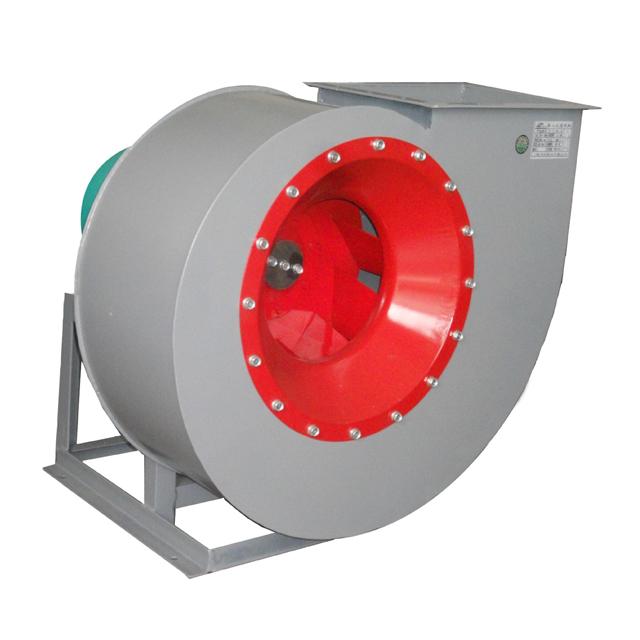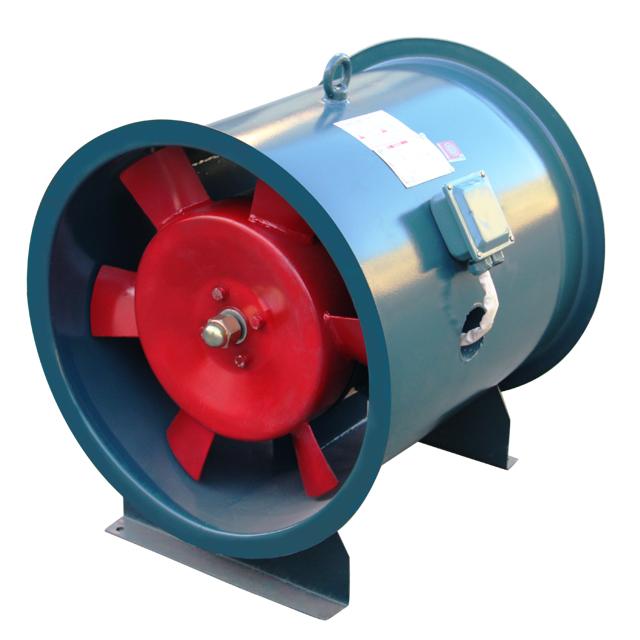Installation and maintenance of air ducts
1. Determine the installation location and layout
In the air duct installation project, determining the installation position and layout is a crucial link. This is not only related to the operation efficiency of the system, but also directly affects the overall layout and beauty of the building. First of all, it is necessary to reasonably plan the direction and layout of the air duct according to the structure and use needs of the building. For example, in large commercial complexes, duct systems need to cover multiple floors and areas, so it is necessary to ensure that duct have the shortest path and the least turns to reduce energy loss and noise pollution. Also, the installation height and location of the duct should be considered to ensure that it does not interfere or affect other parts of the building.
When determining the installation position, the CAD drawing software is usually used for simulation and planning. By accurately measuring the size and structure of the building, a detailed layout map of the air duct can be drawn in the software and optimized and adjusted.
When determining the layout, a variety of factors need to be considered, such as the use function of the building, the flow of personnel, air circulation needs, etc. At the same time, it is necessary to consider the maintenance and maintenance of the duct, so that it can quickly locate and solve problems when needed.
2. Prepare the required materials and tools
Preparation of the required materials and tools is crucial before installing the duct. First of all, according to the installation position and layout, accurately calculate the required duct length, diameter and material, to ensure that the selection of materials meets the requirements of the system.
In addition, it is also necessary to prepare various specifications of support, boom, bolts, nuts and other connections, as well as sealant, sealing belt and other sealing materials. The selection of these materials should be based on the pressure, temperature and medium characteristics of the system to ensure the stability and safety of the system.
In terms of tool preparation, in addition to basic measuring tools such as tape measure and horizontal ruler, professional installation tools, such as electric screwdriver, wrench, cutting machine, etc. These tools should be selected based on installation efficiency and safety considerations. At the same time, safety helmets, gloves, goggles and other personal protective equipment should also be prepared to ensure the safety of personnel during the installation process.
In the process of material preparation, attention should also be paid to the storage and storage of materials. Air duct materials shall be stored in a dry, ventilated warehouse to avoid moisture and corrosion. Connections and sealing materials should be stored in classification to avoid confusion and damage. At the same time, it is also necessary to establish a material management system to record the storage, storage and use of materials to ensure the traceability and management efficiency of materials.
3. Assessment the construction environment and safety
Before the installation of the air duct, assessing the construction environment and safety is a crucial link.
First, a comprehensive environmental assessment of the construction site is required, including spatial layout, ventilation conditions, temperature and humidity and other factors. For example, construction in a closed and poorly ventilated environment may lead to a decline in air quality and affect the health of construction workers. Therefore, to ensure that the construction area with good ventilation conditions, is the primary task to ensure the construction safety.
Second, the safety assessment can not be ignored. It is necessary to identify the construction site, such as aerial work, electrical safety, mechanical equipment operation, etc. Through the development of detailed safety operation procedures, to ensure that the construction personnel strictly observe, can effectively reduce the probability of accidents.In addition, we can also learn from historical cases to analyze the safety accidents occurred in similar construction projects, so as to prevent the occurrence of similar problems in advance.
1. Support installation and fixation
1.1 Select the appropriate stent type
In the duct installation process, it is crucial to choose the appropriate bracket type, which is directly related to the stability and safety of the duct system. First, it is necessary to choose the appropriate support type according to the specific requirements of the air duct system, such as pipe size, weight, running wind speed and other factors. For example, for large, heavyweight air duct systems, heavy steel supports can be selected to ensure their stability and load-bearing capacity. For the small, lightweight air duct system, you can choose to use aluminum alloy or plastic bracket to reduce the overall weight of the system and reduce the cost.
When choosing the support type, the particularity of the construction environment. In wet or corrosive environments, it is necessary to choose stent materials with preservative properties, such as stainless steel stents, to ensure their stability and safety for long-term use. In addition, for duct systems that require frequent movement or adjustment, stents with adjustable height can be selected to make flexible adjustments to actual needs.
In practice, choosing the appropriate bracket type can not only improve the stability and safety of the air duct system, but also reduce the operating cost of the system.
Therefore, when choosing the appropriate support type, the specific requirements of the air duct system, the particularity of the construction environment and the economic benefits should be comprehensively considered. Through scientific and reasonable selection of support type, can provide a strong guarantee for the stable operation of the duct system, but also lay a solid foundation for the long-term development of the enterprise.
1.2 Determine the stent position and spacing
During the process of air duct installation, determining the position and spacing of the bracket is a crucial link. This is not only related to the stability and safety of the air duct, but also directly affects the operation efficiency of the whole ventilation system. When determining the position of the stent, the direction, length, diameter and the wind pressure. In general, the bracket should be set at the straight section and elbow of the duct to ensure that the duct is stable when subjected to the wind. At the same time, the spacing of the bracket needs to be calculated according to the material, diameter and length of the duct. According to the engineering practice experience, for the smaller diameter of the duct, the bracket spacing can be appropriately reduced, while for the larger diameter of the duct, the bracket spacing needs to be increased to reduce the pressure on the duct.
In practice, we also need to pay attention to some special cases. For example, additional supports are required to enhance duct stability across floors or walls. At the same time, the number of brackets is also increased to withstand greater wind pressure. In addition, for the long-distance conveying duct, it is also necessary to consider the thermal expansion and contraction of the duct, and a certain expansion space is reserved in the bracket design.
1.3 Installation and fixing bracket
In the installation of the air duct system, the installation and fixing of the bracket is the key link to ensure the stable operation of the whole system. First, choosing the appropriate stent type is crucial. According to the material, size and installation environment of the air duct, the selection of the bracket needs to be accurately calculated. For example, for large metal ducts, heavy steel supports are usually used to ensure their bearing capacity and stability. And for the small plastic air duct, you can choose the light aluminum alloy bracket, both to meet the load-bearing demand and easy to install.
When determining the position and spacing of the bracket, the layout and stress of the air duct should be fully considered. Generally speaking, the spacing of the bracket should not be too large, so as to avoid the deformation of the air duct due to the uneven force. According to engineering practice experience, the bracket spacing of metal duct is usually controlled between 2 to 3 meters, while the bracket spacing of plastic duct can be appropriately relaxed to 3 to 4 meters.
When installing and fixing the bracket, ensure that the connection between the bracket and the air duct is firm and reliable. This requires the construction personnel to have professional skills and a rigorous working attitude. In practice, the support and the air duct can be closely connected by welding and bolting connection. At the same time, it is also necessary to pay attention to the fixed way of the bracket and the ground or wall to ensure its stability.
In addition, the anti-corrosion treatment of the stent can not be ignored. Since air duct systems are usually installed in indoor or outdoor environments, the supports are susceptible to corrosion. Therefore, on the surface of the bracket coated with anti-corrosion coating or using stainless steel and other corrosion resistant materials to make the support, can effectively prolong its service life.
2, the air duct connection and seal
2.1 Select the appropriate connection mode
In the process of duct installation, it is crucial to choose the appropriate connection mode, which is directly related to the sealing, stability and service life of the duct system. When choosing the connection mode, various factors need to be considered comprehensively, such as pipe material, diameter, working pressure, temperature, and installation environment. Common duct connection methods include flange connection, bearing connection, welding connection, etc.
Take flange connection as an example, it is suitable for a variety of materials and specifications of the duct, has the advantages of firm connection, good sealing, easy disassembly and so on. In practical application, the flanges and sealing gaskets of different materials can be selected according to the working pressure and temperature requirements of the pipe to ensure the reliability and sealing of the connection. For example, in high pressure and high temperature environment, stainless steel flange and high temperature resistant sealing gasket can be selected to improve the pressure resistance and high temperature resistance of the connection.
In addition, welding connection and quick installation connection are also common connection methods in air duct installation. Welding connection is suitable for metal duct, which has the advantages of high connection strength and good sealing, but the installation process is more complex, which requires professional welding equipment and skills. Fast installation connection is a new type of connection mode, it uses standardized connector and sealing materials, has the advantages of simple installation, easy disassembly, good sealing and so on, especially suitable for the air duct system that needs frequent disassembly and maintenance.
2.2 Conduct the air duct connection
When conducting air duct connection, it is crucial to choose the appropriate connection mode. Common connection methods include flange connection, bearing connection and welding connection. Take flange connection as an example, it is widely used in various kinds of air duct systems because of its stable structure and good sealing. During the connection process, ensure that the sealing gasket between the flange and the duct is intact and bolted in strict accordance with the specifications to ensure the firmness and tightness of the connection.
2.3 Ensure the sealing ability
During duct installation and maintenance, it is essential to ensure sealing. The sealing quality directly affects the operation efficiency and safety of the air duct system. When installing the air duct, we must choose the appropriate connection mode, such as flange connection, and choose the appropriate sealing materials, such as rubber gasket, sealant, etc.. The selection of these materials should be considered comprehensively based on their corrosion resistance, high temperature resistance and sealing properties.
When connecting the duct, it must ensure that the connection is close and seamless to avoid the occurrence of air leakage. Use professional sealing tools and techniques, such as sealant gun, hot air gun, etc., to seal the joints.At the same time, after the installation, it is also necessary to conduct sealing testing, such as using smoke testing and other methods, to ensure that the sealing performance of the air duct system meets the requirements.
1. Extend the service life
In the life cycle of the air duct system, extending the service life is one of the core objectives of the maintenance work. With a carefully planned maintenance plan, the air duct system can maintain its efficient operation and reduce its failure rate, thereby significantly extending its service life. According to industry statistics, the average service life of regularly maintained air duct systems can be extended by at least 20%. In order to extend the service life of the duct system, the first needs to check the system, including sealing, stability and tightening of the connections. Through smoke testing or other professional methods, the air leakage point can be found and repaired in time to ensure the sealing of the system. At the same time, the support and the pipe connection are carefully checked to ensure that the pipe is not shaking, so as to enhance the stability of the system.
In addition, the regular cleaning of the air duct system is also a key measure to extend the service life. The accumulation of dust and debris will not only affect the operation efficiency of the system, but also may cause corrosion and damage to the pipes. Therefore, the use of professional cleaning tools to regularly clean the air duct and remove dust and debris is an important step to keep the system in good condition.
It is also critical to promptly replace damaged seals and loose connections during maintenance. The aging of the sealing material can cause air leakage and affect the operation efficiency of the system; and the loosening of the connections may cause the deformation or shedding of the pipe, causing serious damage to the system. Therefore, the regular inspection and replacement of these parts can ensure the stability and safety of the system, thus extending their service life.
2. Ensure the system performance
In the installation and maintenance of the air duct system, it is crucial to ensure the system performance. An efficient and stable air duct system can not only ensure the smooth air circulation, but also can effectively reduce energy consumption and improve the overall operation efficiency.
In order to ensure the system performance, the first need to be strictly controlled in the installation stage. When installing the air duct, it must ensure the stability of the support and the straight pipe, and avoid bending or deformation, which can greatly reduce the resistance of air flow and improve the ventilation efficiency of the system. At the same time, the tightening of the connector and the intact sealing material are also the key to ensure the system performance. A poorly sealed connection point will not only lead to air leakage, but also affect the operation efficiency of the whole system.
In the maintenance stage, regularly cleaning the air duct system is an important measure to ensure the system performance. The accumulation of dust and debris can seriously affect the air circulation, leading to a decline in the system performance. Therefore, it is recommended to conduct a comprehensive cleaning of the air duct system every six months, and use professional cleaning tools to completely remove dust and debris. In addition, the inspection and replacement of sealing materials are also essential. Aging or damage of the sealing material can cause air leakage, which seriously affects the system performance. Therefore, it is recommended to conduct a comprehensive inspection of the sealing materials every year, and replace the aging or damaged sealing materials in time.
In addition to regular maintenance, dealing with sudden faults and extreme weather is also an important measure to ensure the system performance. When the system fails, the failure point must be located quickly, and emergency measures taken to prevent the failure from affecting the operation of the whole system. In extreme weather conditions, such as strong winds and heavy rain, it is necessary to strengthen the pipeline support and regularly check and reinforce it to ensure the stability and safety of the system.
1. Clean it regularly
1.1 Remove the dust and debris
In the routine operation of air duct maintenance, the removal of dust and debris is a crucial link. Over time, a large amount of dust, dirt and other debris will accumulate, which will not only affect the ventilation efficiency of the air duct, but also may cause damage to the system performance. Therefore, regularly cleaning the air duct is a critical step to ensure the proper operation of the system.
In removal of dust and debris. Through the use of professional tools, we can ensure that the dust and debris inside the duct are completely removed, while avoiding secondary pollution to the duct. In addition, the cleaning process also needs to pay attention to the protection of the duct, avoid the use of too rough tools or methods, so as not to damage the duct.
In addition to regular cleaning, it is also very important to prevent the accumulation of dust and debris. This can be achieved by strengthening daily management and maintenance. For example, regularly check the sealing of air duct to ensure no air leakage point; strengthen the clean management of construction environment, reduce the generation of dust and debris; and set up filter screen at the entrance of air duct, etc. These measures can effectively reduce the accumulation of dust and debris, and reduce the frequency and cost of cleaning.
1.2 Use of professional cleaning tools
Regular cleaning is essential in the routine operation of air duct maintenance. To ensure the cleaning effectiveness, the use of professional cleaning tools is essential. Professional cleaning tools can not only effectively remove the dust and debris in the air duct, but also ensure the safety and efficiency of the cleaning process. For example, professional tools such as long-rod vacuum cleaners and duct cleaning robots can go deep into the duct and completely remove hard-to-reach dirt.
2 Check and replace the sealing material
2.1 Check the aging condition of the sealing material
In the routine operations of air duct maintenance, checking the aging of sealing materials is a crucial link. The aging of sealing materials will not only lead to the sealing of the duct system, but also cause a series of problems such as energy waste and system performance decline. Therefore, regular inspection and replacement of aging sealing materials is one of the key measures to ensure the proper operation of the air duct system.
When checking the aging situation of the sealing materials, you can use visual inspection, feel inspection and the use of professional tools for testing and other methods. Visual inspection is mainly by observing the color, texture and surface condition of the sealing material to judge whether it is aging. Generally speaking, aging sealing materials will appear light color, hard texture, surface cracking and other phenomena. Touch check is to touch the surface of the sealing material and feel its elasticity and softness. If the sealing material becomes hard, brittle, and inelastic, then it is likely to have aged.
2.2 Replace the damaged sealing materials in time
During the maintenance process of the air duct system, the timely replacement of the damaged sealing materials is the key link to ensure the efficient operation of the system. Aging, wear or damage of sealing materials can cause air leakage in the air duct system, which will not only affect the performance of the system, but also increase the energy consumption. Therefore, it is essential to regularly check and replace the damaged sealing materials.
In practice, the strategy of regular inspection and timely replacement can be adopted. First of all, through regular inspection, the damage of the sealing material can be found in time. Once the damage is found, the measures should be taken to replace it immediately. During the replacement process, the sealing material with reliable quality and excellent performance should be selected to ensure the sealing effect after the replacement. At the same time, attention should also be paid to the operation specifications in the replacement process to avoid new damage caused by improper operation.
3. Check and tighten the connections
3.1 Check the tightening of the connections
Check the attachment during the maintenance of a duct system. The tightening of the connection is directly related to the stability and safety of the duct system. To ensure the normal operation of the air duct system, the connections must be fastened regularly.
During the inspection, professional tools and methods such as torque wrenches and vibration detectors should be used to ensure that the tightening torque of the connections meets the design requirements. Based on industry standards and empirical data, different types of connections require different tightening moments. Therefore, the appropriate fastening check must be selected according to the type and specification of the connections.
In addition, the connector should be aged. Over time, the connector may become loose or aged due to vibration, temperature change and other factors. Therefore, when checking the fastening situation, we should also carefully observe whether the connector has cracks, deformation and other abnormal conditions. If the connector is aged or damaged, the connector shall be replaced or repaired immediately.
3.2 Tighten or replace the loose connector
During the maintenance of the air duct system, tightening or replacing the loose connections is a critical step to ensure the stable operation of the system. Over time, the connections may become loose due to factors such as vibration, temperature change or material aging, which will not only affect the sealing of the system, but also may lead to pipe deformation and even system collapse. Therefore, it is essential to regularly check and tighten them or replace the loose connections.
In practice, the maintenance personnel should use professional tools and equipment to check the connections individually. For slightly loose connections, they may be tightened with appropriate tools to ensure that they meet the specified torque requirements. For severely loose or damaged connections, they need to be replaced in time. During the replacement process, new parts of the same specifications and material as the original connector should be selected to ensure the compatibility and stability of the system.















